A look at the Australian Dingo and the challenges they face.
The dingo (Canis lupus dingo) is Australia’s largest land predator and is amongst the most prosecuted animals on the Australian continent. Unfairly, they face charges and consequences established by harsh propaganda, outdated scientific allegations, and nature’s most vicious killer; humans.
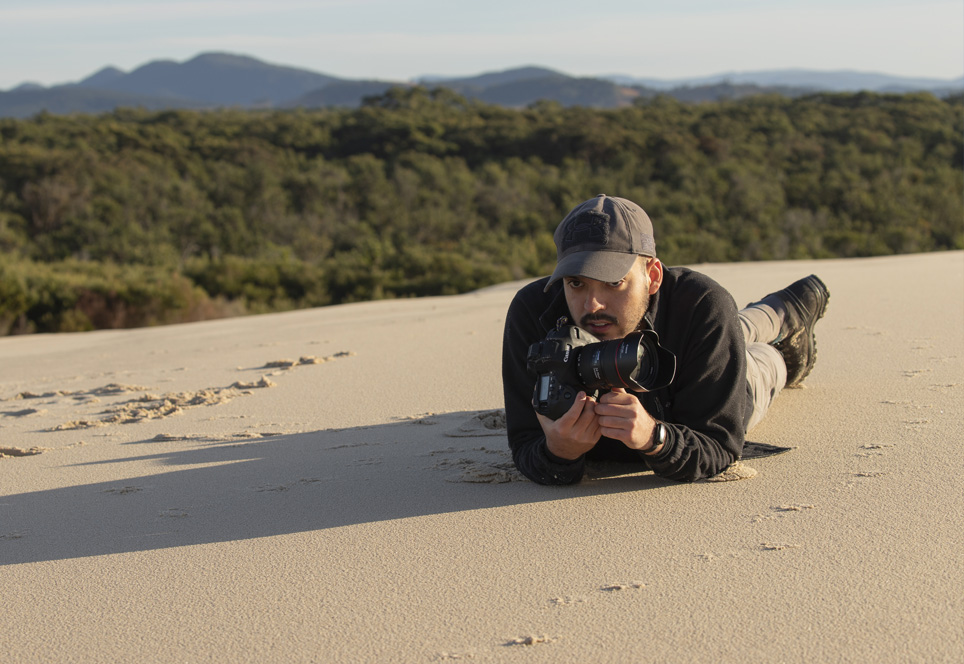
Lucca Amorim working. Photo by Griselda Amorim.
With the opportunity presenting itself during the early 2021 period, I set out to learn more about this pertinent ecological problem. As nature’s storyteller, I then decided to expose this issue and create awareness. So without any delay, here is my take as a wildlife photographer on the ongoing dingo battle.
The Problem
Dingoes currently face a nationwide prosecution where culling programs are both incentivised and financed by state governments. However, when not pushed by the government, hunters and local farmers have a green light when pulling a trigger on a wild dingo.
Key conservationists and wildlife workers focusing on this pertinent issue suggest that this mindset originates from hash propaganda linked to outdated scientific research stating that dingoes are an introduced species and the harsh propaganda that spread through the continent related to the Chamberlain case in the ’80s. Nevertheless, influencing a whole generation of politicians, farmers, and civilians to believe that dingoes are bad and should be exterminated.
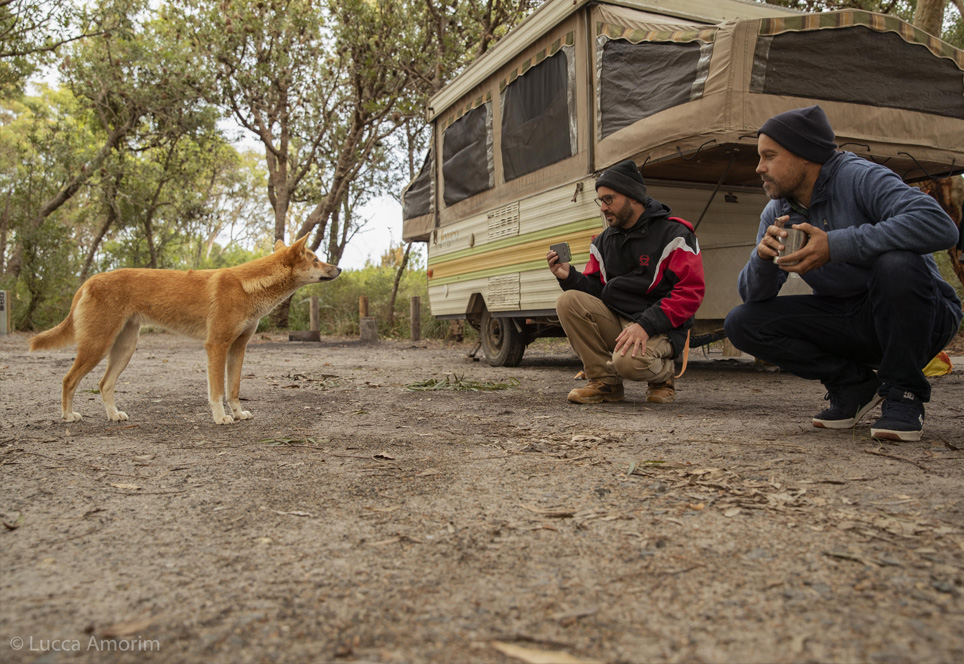
Peaceful interactions between a dingo and humans while encountering them in the wild.
Current Scenario
Following an unfortunate series of events during early 2021, five Dingoes were euthanised on NSW’s midcoast. To control problematic animals, the MidCoast council declared “that they had no other choice but to take action after five dogs were displaying increasingly threatening behaviour.”
As a wildlife photographer, this quickly caught my attention as I did not realise that this was a current and relevant situation happening so close to me. Therefore. I decided to investigate further to uncover the truth.
Unfortunately, after several months of wildlife observation, creating connections, and researching about the current dingo scenario, I am sad to state that we are by far a dingo’s worst enemy. Many things threaten a wild dingo’s life, between which all of them occur separately across different states while occasionally overlapping. However, all of these threats originate at the same stem, I.e., a misconception that they are either not native or un-pure.
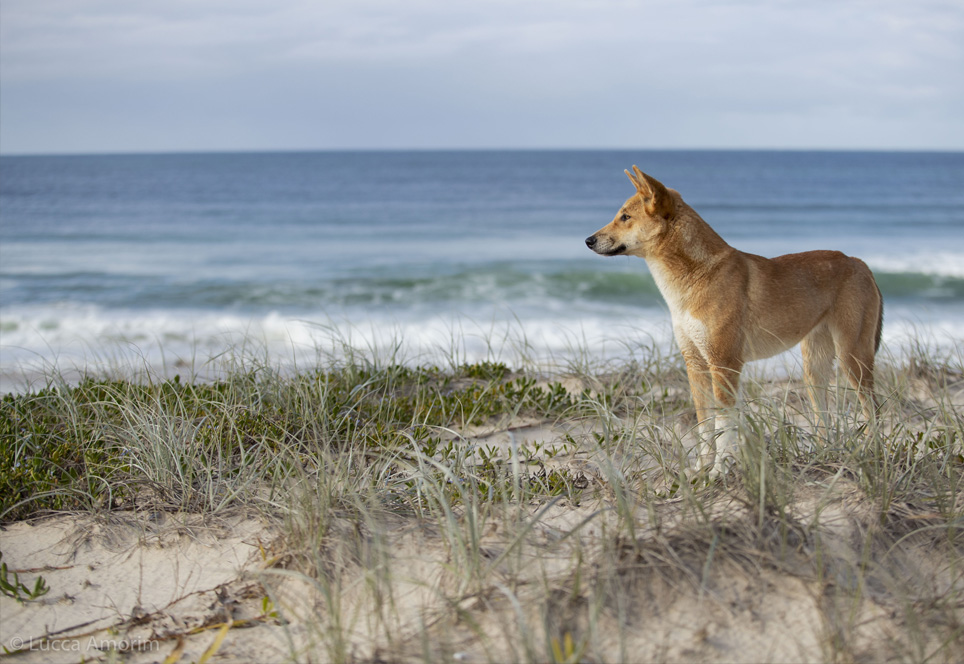
A wild coastal dingo overlloking the sand near the water's edge.
Impact and Execution
Culling is typically associated as a cause of a Dingo’s impact upon humans. To farmer’s, this means a wild dingo is hunting their livestock, while to a civilian, this means a Dingo has attacked. However, events like these originate due to a human’s impact on their environment.
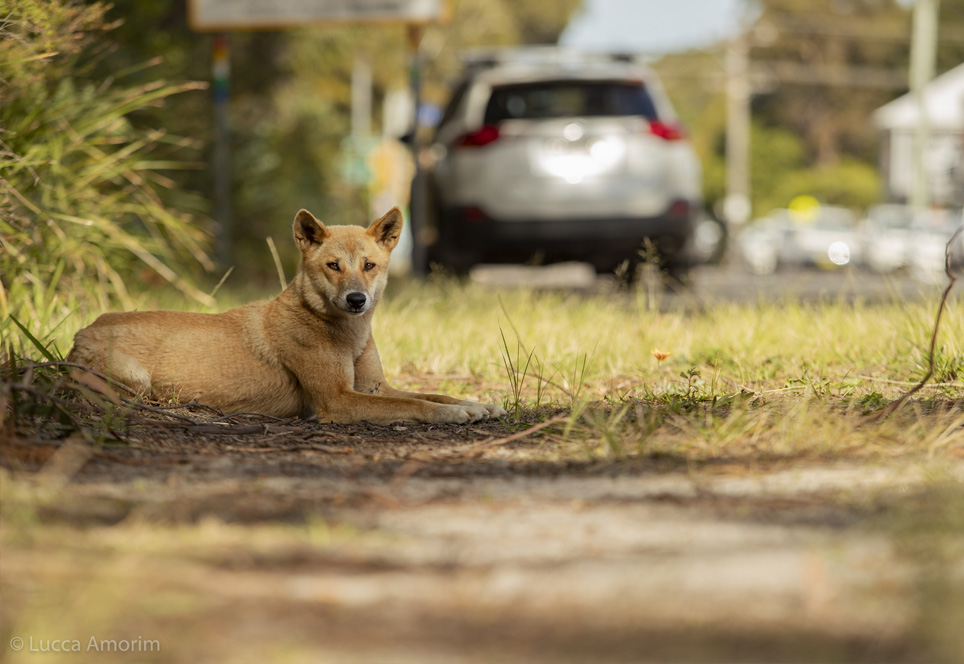
A wild dingo peacefully resting at the city's limits.
While hunts on livestock are part of an apex predator’s behaviour, it is also crucial to understand who is violating who’s territory first. The classic “who was here first?” question. It is also vital to comprehend that Dingoes are beneficial to the environment and contribute by killing foxes and non-native cats. “Dingo control drives shifts in the composition and architecture of savannah ecosystems,” write researchers led by ecologist Viyanna Leo of the Australian Wildlife Conservancy in the journal Oikos. Or, to put it more conversationally, killing Dingoes could exacerbate the very problems that people want to fix.
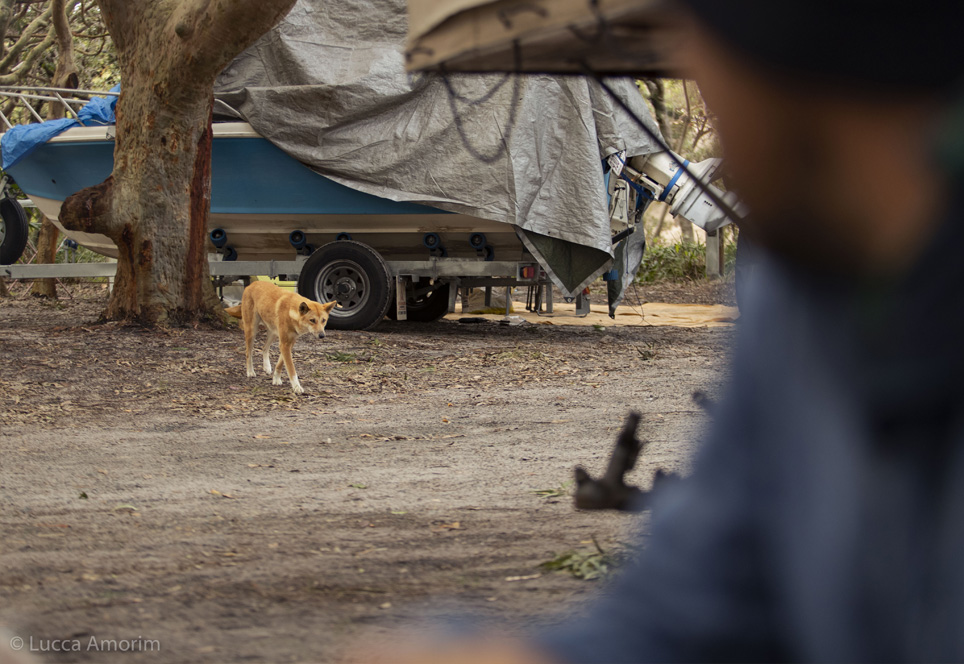
A glance at peace. Human and dingo exchange gazes while exploring camp.
Attacks are a completely different situation. A dingo’s aggressive behaviour can originate from other stems but generally lead back to human ignorance when dealing with a wild and apex predator. One of the most common attack scenarios is when a dingo attacks a domestic dog and kills it. Although unfortunate for humans, behaviour like this is due to an animal’s territorial instinct where one will protect its territory from contestants who do not respect it or are willing to take it from them. Human attacks are also similar, where people disrespect a wild animal’s personal space or territory. A catalyst for experiences like these are dingoes which are handfed— creating a human-dingo dependence and an opportunity for a human to approach a friendly yet wild dingo. It is crucial to understand that animals also have boundaries and attack when these lines are crossed. Here it is essential to understand that respect towards a wild animal is the key to less impact vs execution rate.
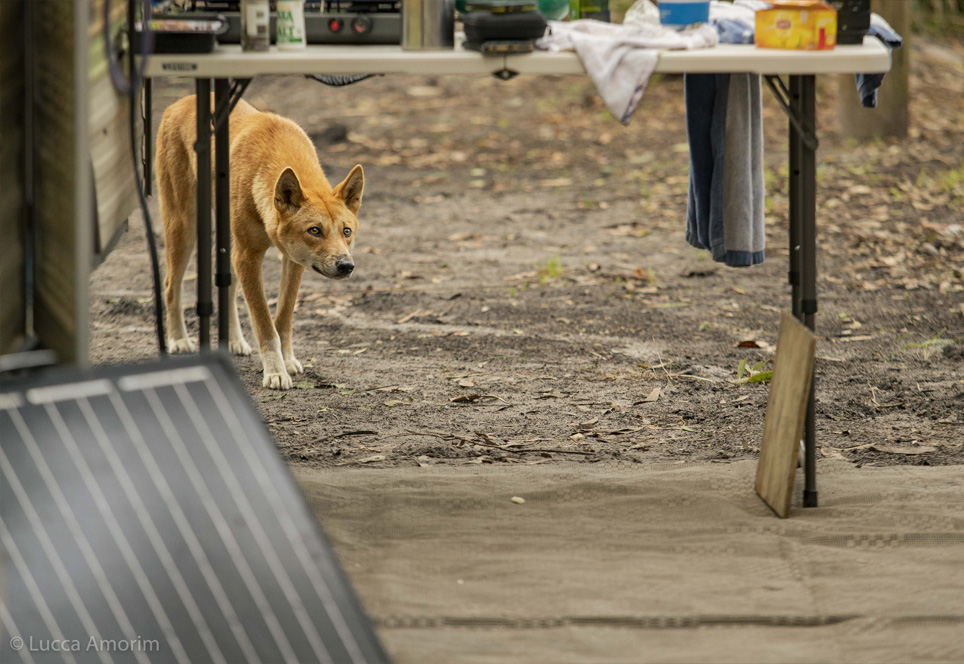
An upwards glance while searching the table for food or feeding opportunity.
However, the worst form of execution is that which happens inside their habitat. 1080 poison bait is used across Australia with the intent of mass exterminating “wild dogs” and foxes alike. Unfortunately, effectively killing thousands of wild dingoes with an odourless and deadly agent hidden in their environment.
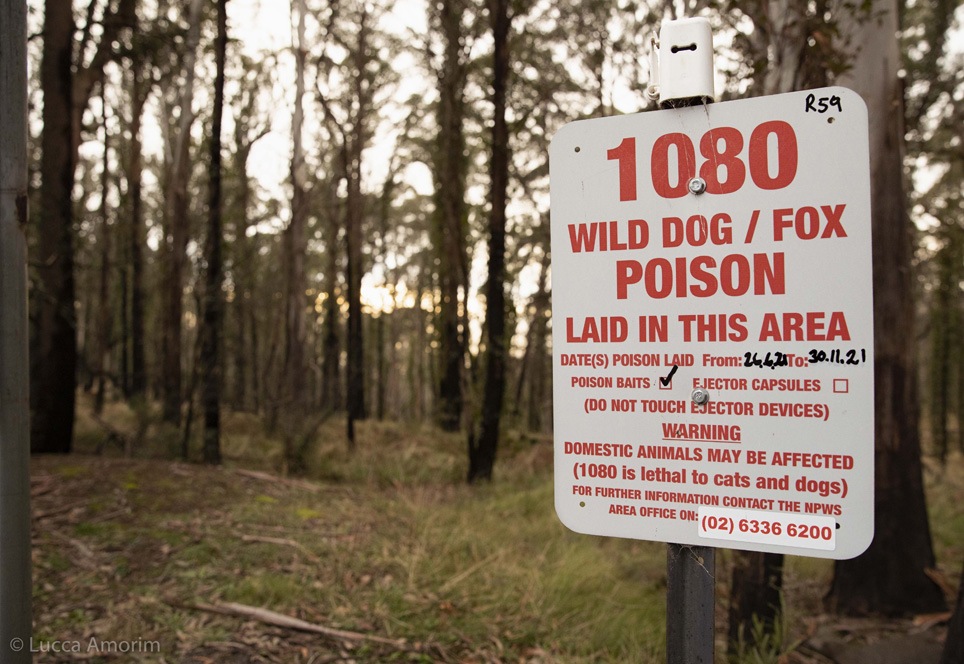
"An odourless and deadly agent hidden in their environment".
A Beacon of Hope
Among the disaster and rampant culling programs, there are positive events occurring in the dingo conservation world. “We don’t have a feral dog problem in Australia,” says Dr Kylie Cairns, a conservation biologist from UNSW science and lead author of the study. “They just aren’t established in the wild.”
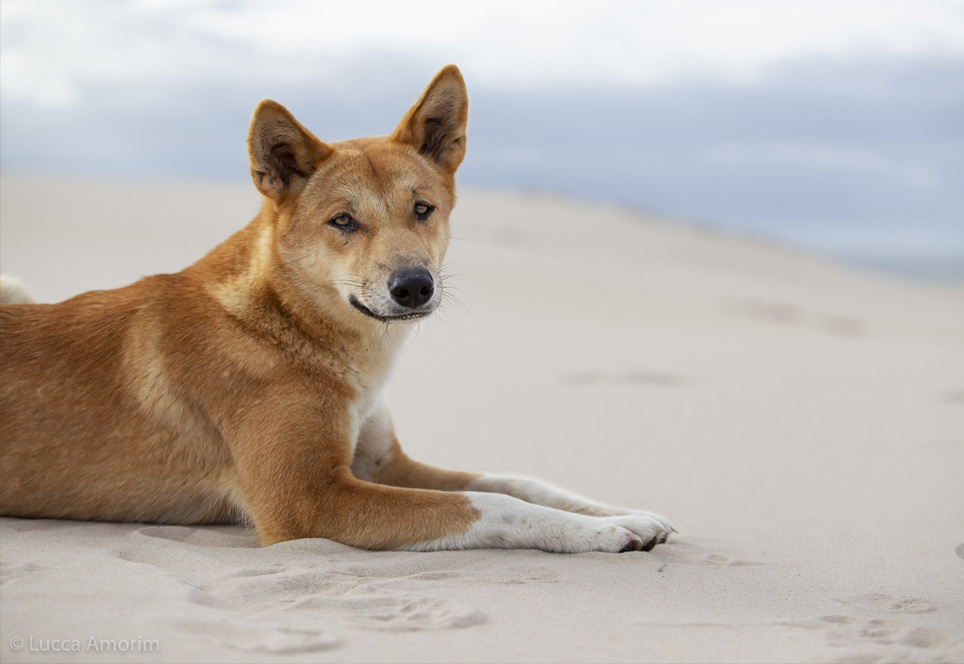
A young wild female dingo curiously observing.
Along with many voices standing up to fight for wild dingoes, Dr Kylie Cairns scientifically has proved that our dingoes are pure. The study invalidates the running stigma that they are not wild and states that 99 per cent of wild are pure dingoes or dingo-dominant hybrids (that is, a hybrid canine with more than 50 per cent dingo genes).
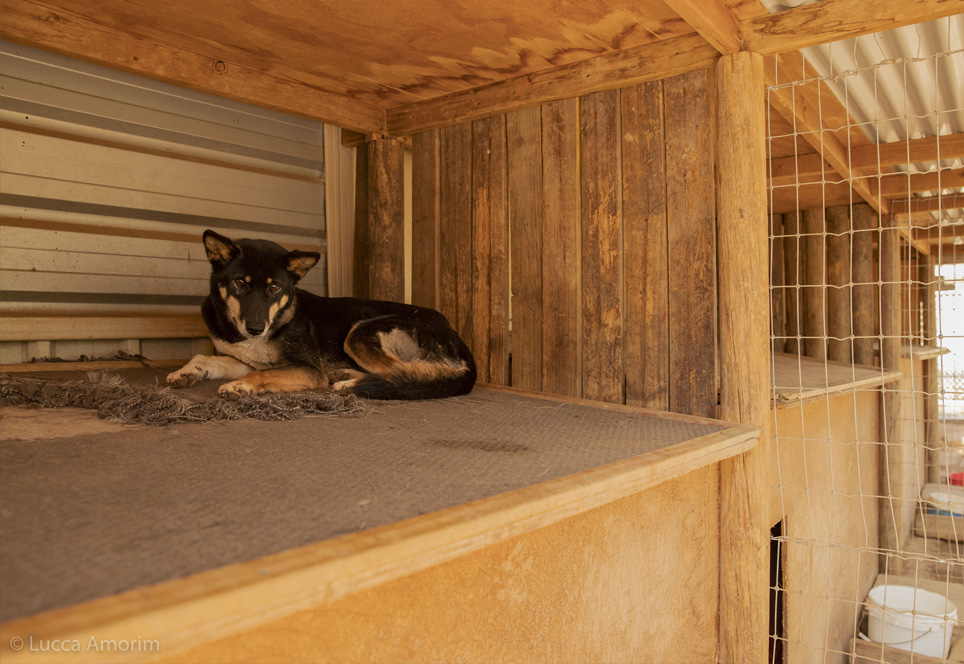
Phoenix. A pure female dingo rescued by Dingo Den Animal Rescue
Together with Dr Kylie’s study, another study by professor Peter Savolainen states that dingoes have been here for longer than 8000 years. Therefore, classifying dingos as a wild native species that are endemic to Australia.
Another vital beacon of hope is the work of rescue centres that provide care for animals that have suffered and regain composure to carry their lives forward. Here is where Dingo Den Rescue Centre shines bright with its dingo rehabilitation and sanctuary.
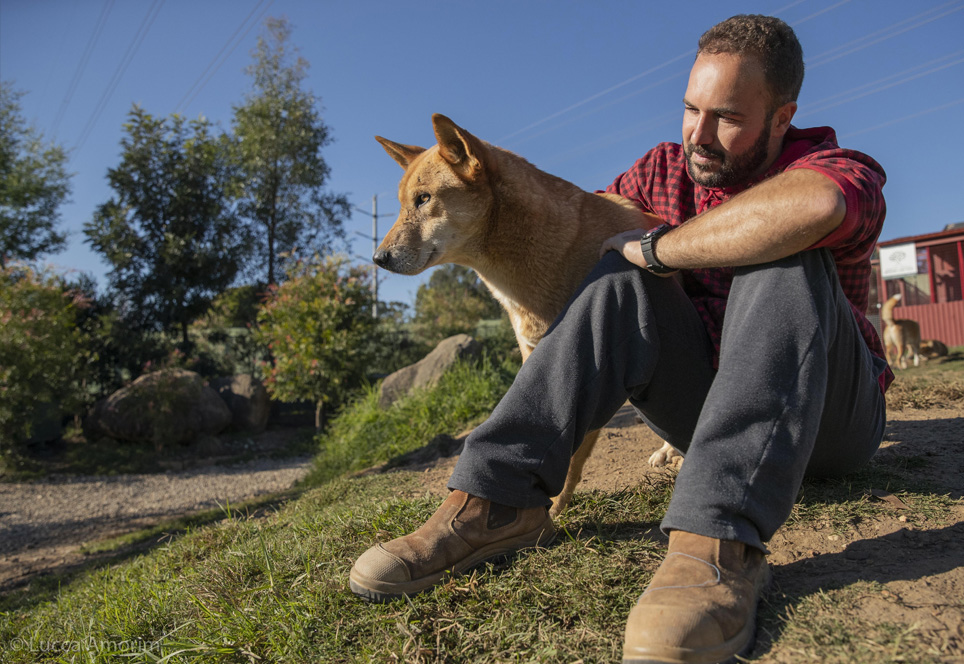
Joshua Said, Dingo Den Animal Rescue founder and presidet.
Led by Joshua Said, Dingo Den operates rescuing dingoes who have been dealt a bad hand and rehabilitating them until they are ready to be re-homed. Here dingoes are cared for and prepared for human adoption.
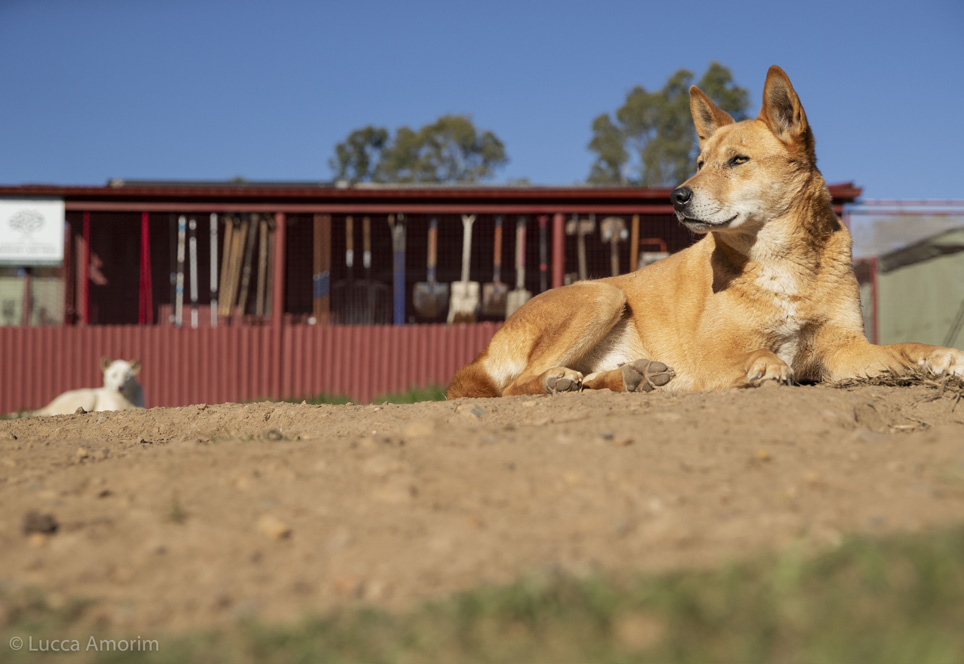
A rescued dingo at Dingo Den basking in the sun.
Running on a volunteer basis, the organisation relies on kind hearts, dedicated people, and generous donations while fighting for conservation. Indeed a team of heroes who are dedicated to a better environment.
Your Turn
Dingo conservation does not only depend on wildlife workers but also relies on each individual. Now is where you come in. Yes, you!
Conservationism starts small and does not require all of your time and money. Small actions like not feeding a dingo and keeping a respectful distance go a long way. This is proven to affect the methods by which a wild dingo interacts with the wild and humans. Therefore, please do not feed a wild dingo.
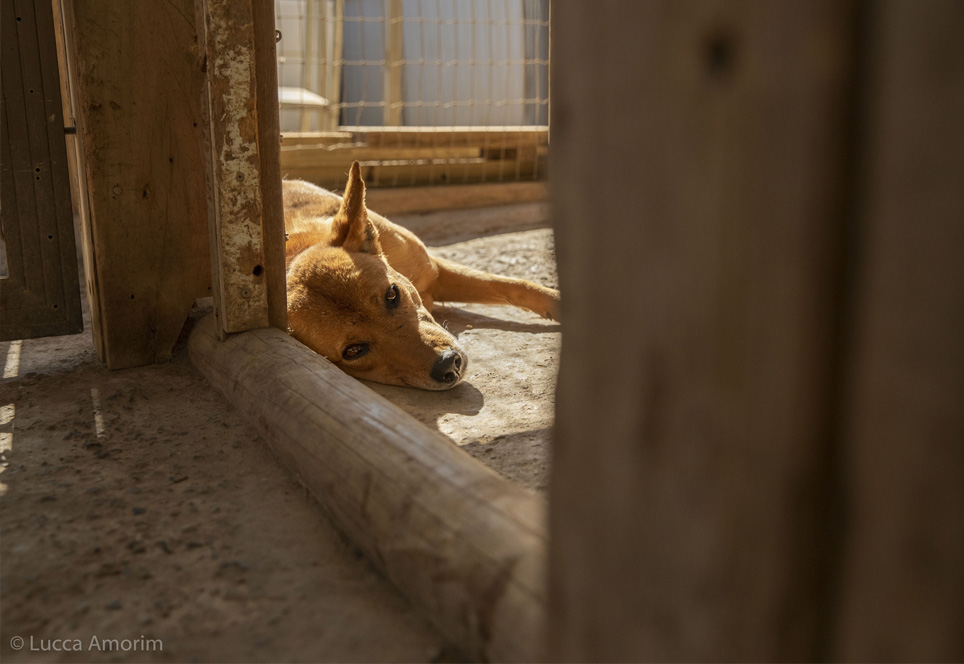
Sienna peacefully resting inside a shelter at Dingo Den Animal Rescue.
However, if you’ve read this far and I’ve managed to get across to you, head over to https://www.dingoden.net/ and see how you can do more to help dingoes around Australia.